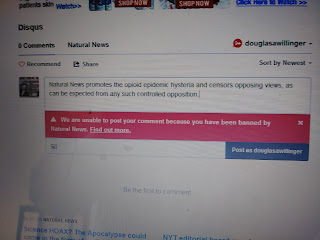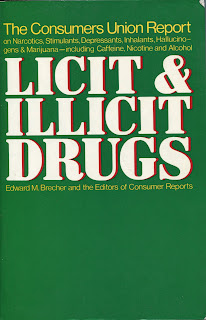Medicinal Coca
http://www.henriettes-herb.com/eclectic/bpc1911/erythroxylon.html
Botanical name:
Coca leaves are the product of Erythroxylum Coca, Lam. (Bolivian or Huanuco leaves), and of E. truxillense, Rusby (Peruvian or Truxillo leaves), shrubs (N.O. Lineae) cultivated in Bolivia, Peru, and Ceylon whence the leaves are imported into Europe. Coca, U.S.P., must yield not less than 0.5 per cent. of the ether-soluble alkaloids of coca. Bolivian coca leaves are oval in outline and vary from 3.5 to 7 centimetres in length, and from 25 to 35 millimetres in breadth. They are brownish-green in colour and are generally well preserved. The veinlets are prominent on the upper surface, and the midrib, which projects at the apex, in the form of a minute horny apiculus, is seen under the lens to lie in a depression, and to bear a distinct raised ridge on the upper surface. On the under surface of the leaf two curved lines run from base to apex on each side of the midrib. The odour is faint but characteristic, and the taste is slightly bitter, followed by a sensation of numbness. Truxillo leaves are generally rather smaller than the Bolivian variety, more broken, and pale green in colour. The ridge above the midrib and the curved lines on each side of it are less distinct, and the veinlets much less prominent on the upper surface. They are occasionally mixed with flowers of a species of Inga, an intentional addition made with the object of improving the drug. Ceylon leaves which are imported into this country in considerable quantities are the leaves of E. Coca; they resemble Bolivian leaves, but are usually larger, and are said to contain rather less alkaloid. Coca leaves from Java are derived from E. Coca, var. spruceanum, Burck.; they are exported in the crushed state from Java to Germany via Amsterdam and yield about 0.7 per cent. of total alkaloid, part of which is benzoyl-pseudo-tropine or tropacocaine. Young (Java) leaves, carefully dried have been found to contain as much as 2 per cent. of alkaloid. As the cocaine is easily hydrolysed it is desirable that the leaves should be free from mildew and kept in a dry place.
Constituents.—Coca leaves contain the alkaloids cocaine (methyl-benzoyl-ecgonine), cinnamyl-cocaine (methyl-cinnamyl-ecgonine), and truxilline (isatropyl-cocaine or cocamine). The total amount yielded by the commercial leaves varies from about 0.1 to 1.0 per cent. As a rule Truxillo leaves contain rather more alkaloid than Bolivian, but only about one-half of it is cocaine, whereas from three-fourths to five-sixths of the total alkaloid in Bolivian leaves consists of cocaine. The latter are to be preferred for medicinal use. Coca leaves also contain cocatannic acid. Java coca contains tropacocaine and four yellow crystalline glucosides, in addition to the other constituents.
Action and Uses.—The properties of coca are virtually those of cocaine (see Cocaina) (not scanned), though preparations of the whole drug appear rather more stimulating and possess a mild astringency. In Peru and Bolivia, coca leaves are chewed for their effect in relieving hunger and fatigue. The leaves of commerce are not so active in this respect as the freshly dried drug used where it is found native. Coca leaves are used as a cerebral and muscle stimulant especially during convalescence. The drug relieves gastric pain, nausea and vomiting. Coca is usually administered in the form of one of the preparations. The liquid extract contains some wax from the leaves, which is precipitated when mixed with water. The miscible liquid extract is free from this objection. Extractum Cocae is dispensed in pills and pastilles. The latter are sucked for their local action and for their stimulating effect. Vinum Cocae and Elixir Cocae are more pleasant forms of administering the drug. In cases of poisoning by preparations of coca the antidotes described under Cocaina should be employed.
Dose.—2 to 8 grammes (30 to 120 grains).
PREPARATIONS.
Also: Cocaine nasal bougies - Cocaine urethral bougies - Cocaine Eye Drops - Menthol and Cocaine Snuff - Cocaine Spray - Atropine Eye Ointment with Cocaine - Cocaine Eye Ointment - Oleinate of Cocaine - Soluble Cocaine Tablets - Strong Soluble Cocaine Tablets
- Elixir Cocae, B.P.C.—ELIXIR OF COCA. 1 (miscible liquid extract) in 6.
- A palatable preparation of coca for use as a cerebral stimulant and gastric sedative. Dose.—4 to 15 mils (1 to 4 fluid drachms).
- Extractum Cocae, B.P.C.—EXTRACT OF COCA.
- Prepared by evaporation of the liquid extract. Dose.—1 to 6 decigrams (2 to 10 grains).
- Extractum Cocae Liquidum, B.P.—LIQUID EXTRACT OF COCA.
- Coca leaves, in No. 20 powder, 100; alcohol (60 per cent.), sufficient to produce 100. Macerate the drug with 200 of alcohol for forty-eight hours, then transfer the mixture to a percolator, and percolate with sufficient alcohol to exhaust the drug. Reserve the first 75 of percolate; evaporate the remainder, at a temperature below 80°, to a soft extract, dissolve this in the reserved portion, and add sufficient alcohol to make up to the required volume. Liquid extract of coca is prescribed in mixture form or diluted with glycerin and syrup. It forms a turbid mixture with water, its waxy constituents being precipitated. Miscible liquid extract of coca is without this disadvantage. The content of total alkaloid in liquid extract of coca is very variable, ranging from 0.2 to 0.8 per cent., the average being about 0.38 per cent. This uncertainty in its composition causes the preparation to be little used. Dose.—2 to 4 mils (½ to 1 fluid drachm).
- Extractum Cocae Liquidum Miscibile, B.P.C.—MISCIBLE LIQUID EXTRACT OF COCA. 1 in 1.
- Miscible liquid extract of coca is free from the wax of the official liquid extract and forms a clear solution with water. It is usually weaker in total alkaloid than the official liquid extract. Dose.—2 to 4 mils (½ to 1 fluid drachm).
- Fluidextractum Cocae, U.S.P.—FLUIDEXTRACT OF COCA.
- Coca leaves, in No. 40 powder, 100; alcohol (49 per cent.), a sufficient quantity. The finished product should contain 0.5 per cent. w/v of ether-soluble alkaloids of coca. Average dose.—2 mils (30 minims).
- Tinctura Cocae, B.P.C.—TINCTURE OF COCA. 1 in 5.
- Used as a cerebral stimulant and gastric sedative. Dose.—2 to 4 mils (½ to 1 fluid drachm).
- Vinum Cocae, B.P.C.—COCA WINE. 1 (elixir) in 8.
- This is a strongly medicated wine. In order that it may be included in the class of medicated wines for sale without a wine licence, it must contain not less than half a grain of alkaloid per fluid ounce. Acts mainly in virtue of its cocaine. Coca wine differs from tea, in that the former beverage acts mainly on the motor areas and the latter on the psychical, Dose.—8 to 15 mils (2 to 4 fluid drachms) with water.
- Vinum Cocae, U.S.P.—WINE OF COCA.
- Fluidextract of coca, 6.5; alcohol (95 per cent.), 7.5; sugar, 6.5; red wine, sufficient to produce 100. Average dose.—16 mils (4 fluid drachms).
- Vinum Cocae et Quininae Phosphatis, B.P.C.—COCA AND QUININE PHOSPHATE WINE.
- Each fluid ounce contains 1 grain of quinine sulphate, 30 minims of liquid extract of coca, 4 minims of diluted phosphoric acid, with alcohol, detannated sherry and distilled water. Dose.—15 to 60 mils (½ to 2 fluid ounces).




Comments
Post a Comment